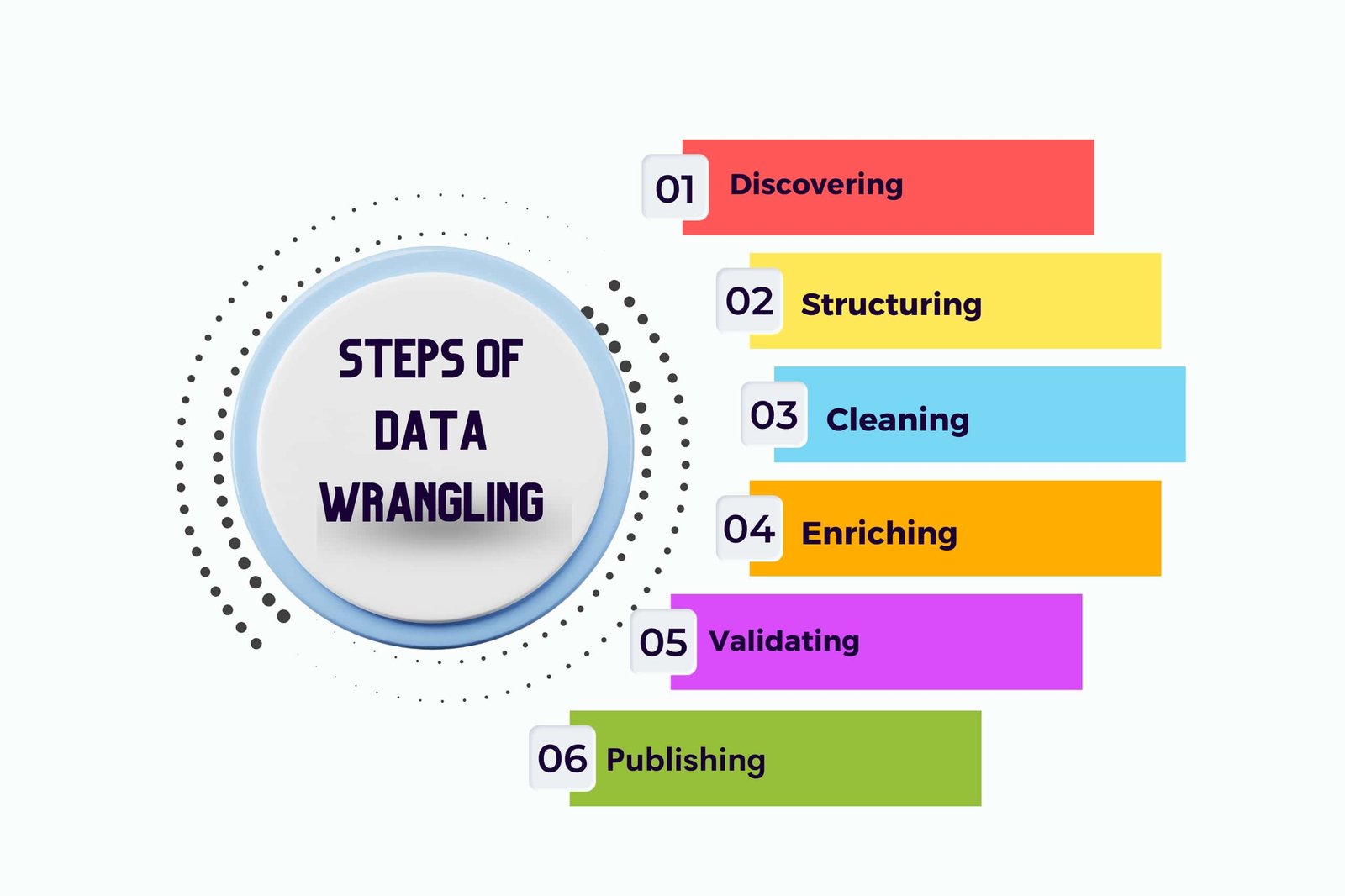In this constantly changing business world, Data is of utmost importance, utilised for making business decisions. With large volumes of data available across sources from the internet, it is mainly used for data visualisation, creating dashboards and manipulating them for enhancing its usefulness. Data collected by Data Scientists within an organisation are mainly raw data which are transformed into 1gful insights for effective business decision-making. Business organisations use the process of Data Wrangling to clean and manipulate data in easily understandable format. .
This blog would focus on the concept of Data Wrangling, the steps involved in the process of it, the benefits as well as the various tools and techniques required to conduct Data Wrangling. Let’s get started.
What is Data Wrangling?
It is the process where raw data is converted into useful data so that it can be easily used for making important business decisions. The processes may involve data cleaning, structuring and visualisation techniques using which an accurate data analysis can be endured. Accordingly, the process of Data Wrangling involves converting the raw data manually hence, making it suitable for business decisions. It enables convenient consumption and organisation of data within business processes.
Importance of Data Wrangling
Around 75% of the tasks of the Data Scientists is to enable Data Wrangling within the organisation for effective decision-making in the organisation. The importance of Data Wrangling can be evaluated as follows:
- To ensure that Data Quality is maintained
- Supports efficient decision-making and enhances insights of data
- Data cleaning is undertaken to eliminate flawed or missing data
- The gathering of data ensures to prepare it for the Data Mining process thereby making the dataset useful.
- Required for cleaning and structuring raw data that helps in creating rigid decisions in a proper format.
- It is essential for effective data management whereby it allows the data to be collected and stored in a centralised location
Steps of Data Wrangling
Discovering: The step of discovering is an analytical process where the data to be used for exploration is understood deeply and an effective approach of using the data is learnt. Based on a set of criteria, Data Wrangling is enabled for dividing the data accordingly.
Structuring: Data in its original form comes in different shapes and sizes. Accordingly, Data Wrangling is used for structuring the raw data in a proper format that would be easy to understand and use.
Cleaning: The next step in the Data Wrangling process is Data Cleaning. It is essential that before Data is used for business purposes, it is clear that all errors and null values are eliminated to ensure high quality of data.
Enriching: the next stage in the process is important as the new data collected should have some unique features that are possible by adding value to it.. The use of the data can be promulgated for strategizing and ensuring that it is able to create a format of enriched- data.
Validating: this step makes use of a specific data set rules in order to progress with further analysis and evaluation of data. After Data is processed, it is verified for its quality as well as consistency establishing a strong foundation to deal with the security issues.
Publishing: the final step of the process is publishing the data whereby Analysts are able to make use of them matching the finalised data with that of the target data. This can be henceforth, used for analysis.
Data Wrangling Tools
There are various tools available which you can use for data cleaning or extracting valuable insights. These tools can be identified as follows:
- Python and R
- MS Excel
- KNIME
- Excel Spreadsheets
- OpenRefine
- Tabula
Data Wrangling with Python
Pandas is mainly used for conducting Data Analysis. tIn case of Data Wrangling with Python is used for the following functions:
- Data Exploration: it is used for data visualisation for analysis and understanding the data.
- Dealing with missing values: Missing values are a common issue in large sets of data. It is replaced with the use of mean or mode or by labelling them as NaN values.
- Reshaping the Data: Here, data is modified or manipulated based on the requirements or addressing the pre-existing data.
- Filtering Data: Data is filtered based on the elimination of unwanted rows and columns thus, presenting data in a compressed format.
Also Read: How Python Became The Language for Data Science?
Benefits of Data Wrangling
As Data Scientists spend 80% of their time in Data Wrangling, it is important to understand the benefits of this, that it offers businesses:
- Analysing Data Easily: Data wrangling helps in transforming the raw data into much usable format that ensures that Data Analysts are able to analyse data much easily.
- Meaningful Data Insights: Data Wrangling process when implemented helps in creating structured and organised data. It ensures to derive meaningful insights of data from the structured data unlike the un structured ones.
- Effective Targeting Strategy: As this process helps in providing clear and concise Data, it allows businesses to identify their target market clearly and ensure that their needs are fulfilled based on the data analysed. .
- Utilisation of Time: As in case of unstructured data, Data Analysts might find it time consuming to clean and structure the unruly data for analysis. However, with the data Wrangling process involved, it helps in saving time and using the time efficiently for analysis.
- Data Visualisation is enhanced: Data Wrangling process makes it easier and convenient to present Data in visually presentable format hence, making it easier to understand.
Summing Up!
From the above post, it can be concluded that Data Wrangling is an essential part of businesses to identify, analyse and organise data effectively. Decision-making processes in businesses become easier when data is clearly structured and can be understood easily. Data Wrangling is a crucial process in the field of Data Science, enabling higher efficiency in data analysis and visualisation.











